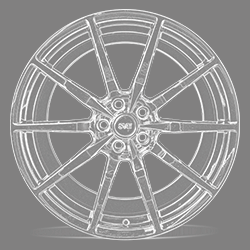Norm Peterson
corner barstool sitter
I'm just a guy that welds stuff but I don't think wheel centerline has anything to do with motion ratio. Ball joint centerline sounds right to me. Norm will have the answer shortly.

Motion Ratio = (A/B) x cos(q) x (C/D)
C/D can be greater than 1 if the FVIC is on the "wrong" side like it is in many older cars like the GM Intermediates and I think the 1st gen Mustangs.
The motion ratio math stays the same, but the FVIC moves around and changes the "C" and "D" numbers. Spring angle q also varies, and I guess if you get picky enough that the "center of the tire" would really need to be some sort of contact patch force centroid (which will also move around as camber varies).by center line I meant a line that cuts down the middle of the tread if you were to view the tire from the back of the car.
I know suspension parts make all sorts of crazy angles and hub spacing and all that, but transmissability of force would still apply. and like I said I was assuming the control arm stayed perfectly level so I could explain without writing a book.
There's aspirin in the medicine cabinet.
Norm
Last edited:




